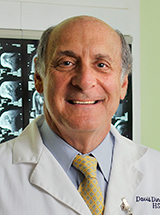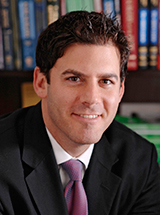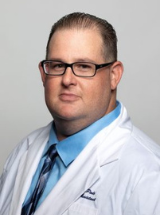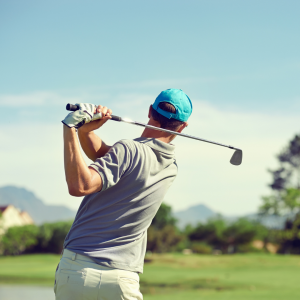David Dines, MD, has built his practice based on decades of clinical experience and research focusing on the shoulder and related injuries. He is the Medical Director for the ATP World Tennis Tour and has operated on thousands of shoulders throughout his career while publishing many of the most important research articles and textbooks on shoulder surgery.
Joshua Dines, MD provides a full range of Sports Medicine services, including surgical and non-surgical treatments for injuries to the shoulder, knee, and elbow. He works with the NY Mets and NY Rangers as well as college athletes, high-school athletes, weekend warriors, and those patients just looking to get back to performing their everyday activities without pain. Together, Dines Orthopedics offers offices in two convenient locations in New York City at Hospital for Special Surgery and in Uniondale Long Island, offering their patients surgical and non-surgical options in both locations.
Dines Orthopedic provides a broad range of highly specialized Orthopedic Sports Medicine Services. Our team will properly evaluate and treat sports-related and chronic conditions affecting the elbow, knee, and shoulder. Sports injuries are often a result of overuse and wear and tear.
When surgery is required, you can trust that you are in the right hands at Dines Orthopedic. Our surgeons have performed thousands of procedures and improved the lives of countless patients through our comprehensive care.
Accepted Insurances
Oxford/United
BCBS
Cigna
Aetna
Emblem GHI
Emblem HIP Prime and Access plans
*Even if we do not participate with your specific plan, seeing our providers as an out-of-network patient is often possible and our staff is trained to assist you through the process.
*Please note that Joshua Dines, M.D. & David Dines, MD does not accept Medicare or Medicaid.
*We do not accept Workman’s Compensation or No Fault Insurance
*Self Pay Patients: Payment is due at the time of service.
For Credit Card Payments: Please call (516) 482-1037, select option 6 and ask for Linda.
Meet Our East Meadow Orthopedic Team
What Does an Orthopedist Do?
An orthopedist might sound like a large medical term for someone you do not know or understand. In actuality, an orthopedist is a doctor who treats diseases of the muscles, skeleton, soft tissue, and joints. Often, these diseases are the result of long-term stress on the body or acute accidents that may have caused harm. Still, if you need an orthopedic in East Meadow, NY, contact Dine Orthopedics today to schedule an appointment.
Why Might You Need An Orthopedist?
Sometimes, certain injuries such as ones obtained while working out, or on the job, might require an orthopedist. This is typical because common injuries sustained while on the job or working out are related to the muscles, skeleton, soft tissue, and joints.
What An Orthopedist Treats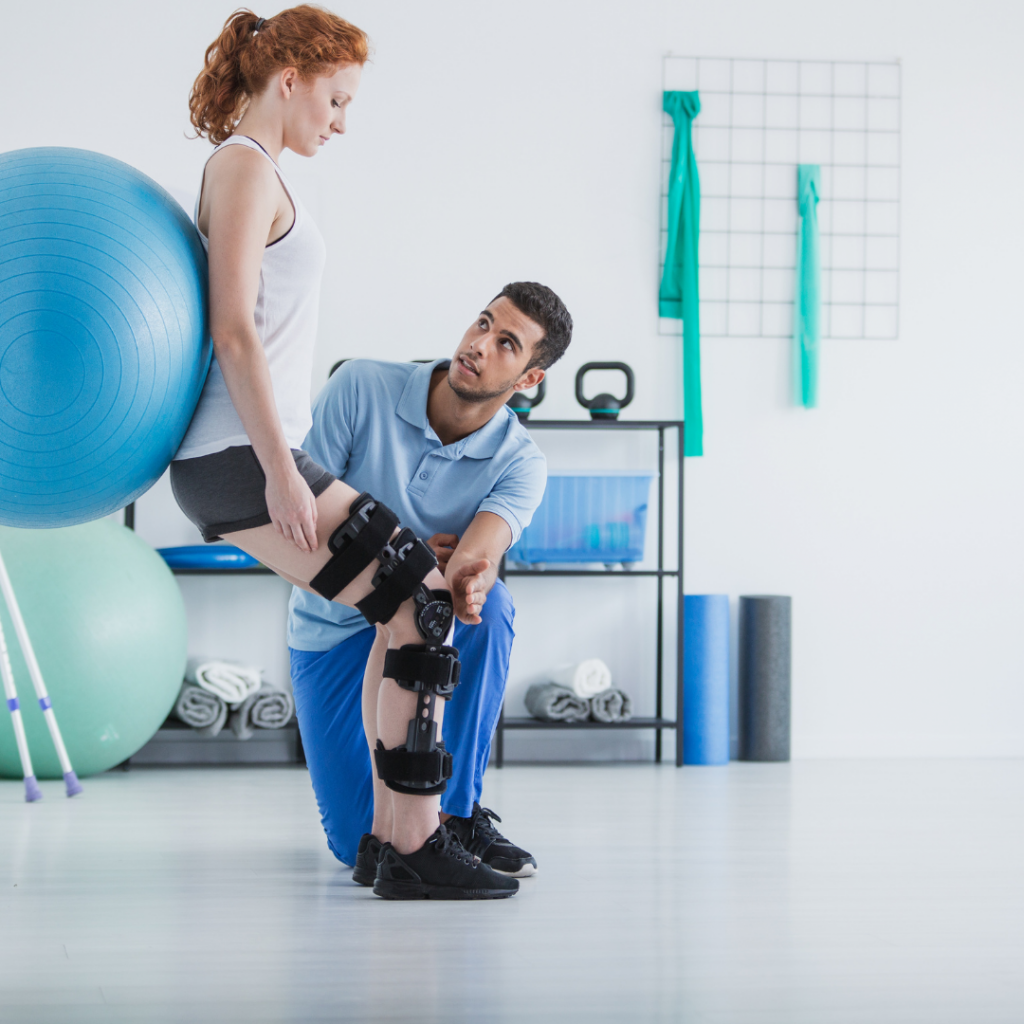
The most common thing an orthopedist might treat is a broken bone. Normally, a broken bone is treated by assessing what bone or bones are broken and properly casting them. If the bone or bones are severely damaged, beyond simple healing, orthopedic surgery might be necessary. Reasons for surgery could also extend to if the bone is in the position to grow back improperly. If the bones are totally unable to grow back correctly, it may also be suggested to amputate the limb.
Arthritis
An orthopedist might also treat conditions such as arthritis. Arthritis is inflammation along joints that makes it difficult to move the joint and limb in question. One disease that typically comes with age is known as osteoporosis. Osteoporosis is when bones become weak and brittle, increasing the risk of them breaking. It is particularly prevalent amongst the elderly. This is why a mild fall could be very painful and troublesome for a senior citizen.
Skeletal and Bone Injuries
An orthopedist will also treat skeletal deformities, such as scoliosis. Scoliosis is when the spine becomes deformed entirely, typically curved. Though the spine can be repaired with surgery, some may opt to live with the curved spine if it is only minor. Either way, a brace to prevent the spine from further curving will typically be prescribed.
Orthopedists and orthopedic surgeons also engage in most bone replacements. Common examples are hip and knee replacements. These are replaced most often because they take gigantic amounts of stress when walking, especially if the person is overweight. It is a good idea to maintain an exercise routine to prevent needing these replaced.
Sports Injuries
Sometimes patients may sustain sports injuries while exercising. For instance, a tear or pull of the Achilles tendon. When this occurs, orthopedists may use tape to prevent further injury and allow for healing. You might ask yourself, what does tape have to do with healing from a sports injury? Actually, tape can mean staying in the game and continuing moderate exercise. Tape allows the body to be unnaturally restricted in its movements. That way, when exercising, the range of motion is maintained somewhat and the player can still get in the game without making the injury worse. Sometimes the orthopedist will suggest that the player stay out instead. If that is the case, it is suggested that the player follow those directions for fear of further injury.
Finally, orthopedists may help with some nerve pain issues. Nerve pain is often caused by bones pinching nerves, when connective tissue has faded. This can result in straight pain, or numbness of the area. If nerve pain occurs, the usual method to solve it is through pain killers or surgery. Again, like a spinal injury, sometimes it may be best to leave the nerve intact for risk of further injury. Increasingly though, modern medicine suggests that nerves can be repaired. There is hope yet that that will increase to a definitive yes in the future.
Contact Us For Orthopedic in East Meadow NY
An orthopedist might seem like a big word. It might even seem like a doctor that only people with specific diseases visit. Truthfully, an orthopedist is much more than that and covers many diseases all across the body. If you need an orthopedic in East Meadow, NY, contact Dine Orthopedics today to schedule an appointment.
Different Kinds of Orthopedic Surgeries
Orthopedic surgery treats musculoskeletal issues. From broken bones, sprains and strains, joint pain, and arthritis. If you have been dealing with pain or experienced a muscle, tendon, or ligament injury that has not healed, seeing an Orthopedic doctor in East Meadow, NY, might be the help you need.
Seeing an Orthopedic in East Meadow NY can perform various treatments to help reduce your pain. These treatments can range from physical therapy, providing shots to relieve pain, or total joint replacement surgeries. The most common orthopedic surgeries include:
- ACL reconstruction surgery
- Knee replacement surgery
- Shoulder replacement surgery
- Hip replacement surgery
ACL Reconstruction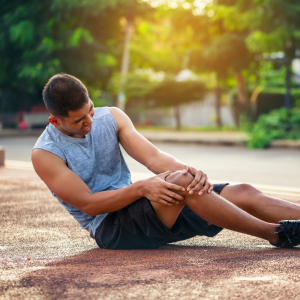
ACL injuries typically arise during sports, such as basketball, soccer, football, and others that require a lot of quick stops and changes in direction. The constant quick stops and rapid changes in direction can cause the ligament to tear. A few reasons to considering seeing an Orthopedic East Meadow NY for ACL reconstruction are:
- You want to continue playing sports
- Multiple ligaments are torn or injured
- Your knee keeps buckling
- You’re young
Before the surgery, doctors recommend that you undergo physical therapy for several weeks. Pre-surgery physical therapy aims to reduce any pain and swelling and strengthen muscles and restore some range of motion. The surgery itself is completed through numerous small incisions. The damaged ligaments are removed from the area and then replaced with a piece of graft made with a piece of your knee or from a piece of tendon from a donor. Once the surgery is finished, you can leave the hospital the same day. Once you are home from surgery, you must keep the leg elevated, apply ice to the area, and rest it as much as possible while it heals.
Knee Replacement
Knee replacement surgery is not only one of the most common orthopedic surgeries, but 90% of patients who receive this surgery see a drastic improvement in their ability to move around and their pain levels. Some of the reasons to get knee replacement surgery is:
- Severe pain or swiftness that makes it challenging to move around
- Knee pain while resting
- Swollen knee
- Physical therapy has not helped reduce pain in the knee
Prepping for this surgery requires a few steps. The steps include a physical examination, blood work, X-Rays, and you need to fast for 8 hours before surgery. The surgery itself can take 1-2 hours and may require the patient to stay in the hospital for 1-4 days. The surgery can be completed in one of two ways. The first is by making an 8 to 10-inch cut to remove the damaged part of the knee and replace it with an implant. The second option is similar but only requires a 4 to 6-inch cut. An Orthopedic East Meadow NY, will decide which version of the surgery fits your needs best. The recovery process involves physical therapy to strengthen the joint.
Shoulder Replacement
Shoulder replacement surgery is usually the result of the shoulder joint being severely damaged. In the United States, nearly 50,000 shoulder surgeries are performed each year. Some common reasons to receive shoulder replacement surgery are:
- You had a severe shoulder injury in the past, like a broken shoulder
- Severe arthritis
- Torn rotator cuff
- Physical therapy has not reduced pain
Depending on how severe your injuries are, you can receive either a total shoulder replacement, a partial shoulder replacement, or a reverse shoulder replacement. Before receiving shoulder replacement surgery, it is common to receive a physical examination and X-Rays, so the Orthopedic East Meadow NY, can get a thorough evaluation of the joint. Altogether, the procedure takes about 3 hours to complete. During the recovery process, it will be challenging to move your arm, so you will most likely spend 2 to 5 days after surgery in the hospital. Going to physical therapy after surgery will help you get your range of motion back in the area.
Hip Replacement
Hips can be damaged by arthritis, or a fracture, causing you to need shoulder replacement surgery. Hip replacement surgeries are so common in the United States that over 450,000 surgeries are performed per year. Hip surgery is recommended if you are experiencing the following:
- You are experiencing pain while walking or bending
- You are experiencing hip pain while resting
- Range of motion in your hips is limited
- There is no pain relief from physical therapy or anti-inflammatory drugs
The surgery is conducted by cutting the thigh bone, which will help the surgeon gain access to your hip, removes the damaged cartilage, and replaces it with an artificial joint. After the surgery, it is common to spend the next 4 to 6 days in the hospital to ensure that your hip stays in the proper place. It is also suggested to attend physical therapy the day after surgery. You may also need help walking with the aid of a cane or crutches.
Dines Orthopedic East Meadow NY
If you are looking for more information about any surgeries, as mentioned earlier, or other orthopedic surgeries, you should contact an Orthopedic in East Meadow NY. Dines Orthopedic offers its patients a wide range of services. Contact us today to schedule to find out more information.
Frequently Asked Questions
Orthopedic surgery is a branch of medicine that focuses on the diagnosis, treatment, and prevention of musculoskeletal conditions and injuries. It involves surgical interventions to address issues with the bones, joints, muscles, ligaments, tendons, and nerves.
Orthopedic surgery can treat a wide range of conditions and injuries, including fractures, joint dislocations, torn ligaments and tendons, spinal disorders, degenerative joint diseases like arthritis, sports injuries, carpal tunnel syndrome, and many others.
Orthopedic surgery is typically recommended when conservative treatments such as medication, physical therapy, and lifestyle modifications have failed to alleviate the symptoms or when the condition or injury requires surgical intervention for optimal recovery and long-term outcomes.
The preparation for Orthopedic surgery may vary depending on the specific procedure and your individual circumstances. Your orthopedic surgeon will provide you with detailed instructions, which may include fasting before surgery, stopping certain medications, arranging for transportation, and making necessary arrangements for post-operative care.
As with any surgery, there are potential risks and complications associated with Orthopedic surgery. These can include infection, bleeding, blood clots, adverse reactions to anesthesia, nerve or blood vessel damage, and poor healing. However, your surgeon will take all necessary precautions to minimize these risks.
The recovery process will vary depending on the type and extent of the surgery performed. It may involve a period of immobilization, physical therapy, pain management, and follow-up appointments with your orthopedic surgeon. Following post-operative instructions, maintaining a healthy lifestyle, and participating in rehabilitation exercises are essential for optimal recovery.
The duration of recovery varies based on the procedure and the individual’s overall health. Some surgeries may require only a few weeks of recovery, while others may take several months. Your surgeon will provide you with a personalized estimate of the recovery time based on your specific case.
Rehabilitation or physical therapy is often a crucial part of the recovery process following Orthopedic surgery. It helps improve mobility, strength, and function, and may be necessary to regain optimal use of the affected area. Your surgeon will determine if you require rehabilitation and prescribe a suitable program.
The effects of Orthopedic surgery are intended to be long-lasting and provide relief from pain, restore function, and improve quality of life. However, individual results can vary depending on factors such as the severity of the condition, the success of the surgery, adherence to rehabilitation, and overall health. Regular follow-up appointments with your orthopedic surgeon can help monitor your progress.
In many cases, patients can gradually return to their normal activities after Orthopedic surgery, but it depends on the specific procedure and the individual’s recovery progress. Your surgeon will provide guidance on when and how you can resume activities such as work, exercise, and sports.
Common Injuries for Overhand Athletes
An overhand athlete typically throws their arm or hand above their shoulder level. This repetitive action can lead to injury over time. According to Dines Orthopedic East Meadow NY, shoulder and elbow injuries can occur from overhand athletes. Some overhand shoulder injuries they can experience are:
Bursitis
This is inflammation and irritation of the bursa. The bursa is a small fluid-filled sac that assists in reducing friction around the tendons and bones. To heal Bursitis, you should rest and ice the shoulder, take anti-inflammatory medications, and attend physical therapy. If those do not work, a cortisone injection can be the next step to lower inflammation, or arthroscopic shoulder surgery can be an option.
Impingement Syndrome
This is when the rotator cuff tendons and the bursa rub against the acromion of the shoulder blade. Arthroscopic surgery can be performed to shave the underside of the acromion to give it more space. That solution should reduce pain and inflammation and give a better range of motion.
Internal Impingement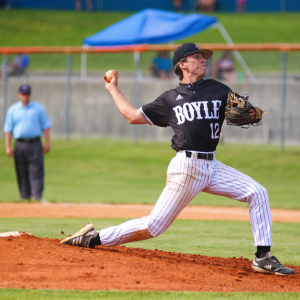
This is the shoulder joint where the rotator cuff tendons are pinched between the humerus and the glenoid. The rotator cuff and labrum can encounter an injury or tear. You will feel discomfort when you make the throwing motion.
Labral Tears
The labrum adds depth to the shoulder socket. It helps the socket hold the humeral head in place. This can occur from overuse or falling with your arm out. Consistently moving the shoulder with an injured labrum can worsen the injury. Labral tears often lead to shoulder instability, in which the humeral head does not stay tightly in the socket. Before using surgery as an option, try stretching, physical therapy, rest, anti-inflammatory medications, and cortisone injections.
Rotator Cuff Tears
This is when one or more of the rotator cuff tendons tears from its attachment on the proximal humerus. Many rotator cuff tears often increase in size. When the rotator cuff tears completely, the rotator cuff is longer attached to the humerus. Patients with rotator cuffs will likely feel pain and weakness in the shoulder.
Rotator Cuff Tendonitis
This condition causes one or more of these tendons to become inflamed. This can develop from overuse of the shoulder and also comes with shoulder pain in the upper arm. Usually, rest and strengthening exercises are recommended as a treatment for rotator cuff tendonitis.
Shoulder Instability
This is where the ball of the upper arm bone pops out of the socket of the shoulder. It can partially pop out of the socket or become completely dislocated. The determining factors for treatment are the level of instability combined with the patient’s age and activity level.
Possible Elbow Injuries for Overhand Athletes
Golfer’s Elbow
This causes pain over the inner part of the elbow, which can also radiate down the wrist’s side. Golfer’s elbow is caused by damage to the tendons that bend the wrist toward your palm. Platelet-rich plasma injections are an alternative healing option besides cortisone injections.
Lateral Epicondylitis
It is also known as “Tennis Elbow.” The pain is usually located over the elbow’s outer part and the muscles that control wrist extension. Tennis elbow is typically caused by repetitive overuse. Lateral epicondylitis is the overuse of the thumb and index and middle fingers. An overhand athlete typically throws their arm or hand above their shoulder level. This repetitive action can lead to injury over time. According to Dines Orthopedic East Meadow NY, shoulder and elbow injuries can occur from overhand athletes. Some overhand shoulder injuries they can experience are:
Bursitis
This is inflammation and irritation of the bursa. The bursa is a small fluid-filled sac that assists in reducing friction around the tendons and bones. To heal Bursitis, you should rest and ice the shoulder, take anti-inflammatory medications, and attend physical therapy. If those do not work, a cortisone injection can be the next step to lower inflammation, or arthroscopic shoulder surgery can be an option.
Impingement Syndrome
This is when the rotator cuff tendons and the bursa rub against the acromion of the shoulder blade. Arthroscopic surgery can be performed to shave the underside of the acromion to give it more space. That solution should reduce pain and inflammation and give a better range of motion.
Possible Elbow Injuries for Overhand Athletes
Golfer’s Elbow
This causes pain over the inner part of the elbow, which can also radiate down the wrist’s side. Golfer’s elbow is caused by damage to the tendons that bend the wrist toward your palm. Platelet-rich plasma injections are an alternative healing option besides cortisone injections.
Lateral Epicondylitis
It is also known as “Tennis Elbow.” The pain is located over the elbow’s outer part and the muscles that control wrist extension. The cause of Tennis elbow is repetitive overuse. Lateral epicondylitis is common among athletes who often need to grip, especially using the thumb and index and middle fingers.
Torn Ulnar Collateral Ligament (UCL)
The UCL connects the humerus to the ulna. Constant overuse or failing to rest sufficiently between competitions or practice can lead to microscopic tears that can progress to larger tears.
How to Prevent Overhand Injury
Dines Orthopedic East Meadow NY recommends a few ways to prevent some of the previously stated overhand injuries by:
- light stretching and warm-ups
- Throwing warm-up sessions (for particular sports)
- overhead motion warm-ups
- Proper overhead positioning and movement
- Rest in between competitions
- Muscle strengthening
Orthopedic East Meadow NY
If you are suffering from any of those injuries or feel like you need a professional opinion, contact Dines Orthopedic. We provide orthopedic services for knees, elbows, shoulders, sports medicine, and in-office arthroscopy. When looking for an Orthopedic East Meadow NY, make sure you visit Dines Orthopedics for the best treatment options.
Patient Testimonials




